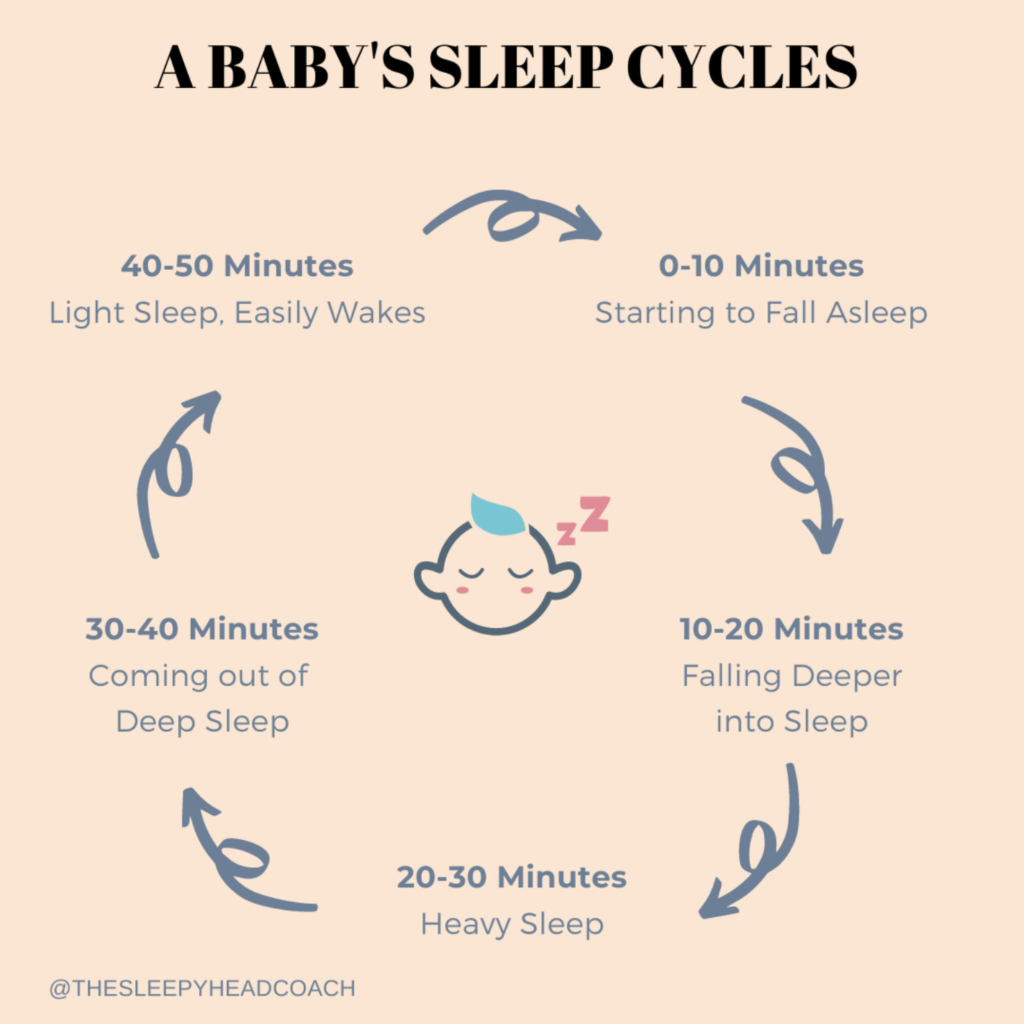Once you understand your child’s sleep cycles, you can better anticipate and Let’s start with the basics: your newborn’s sleep isn’t very predictable because their sleep cycles aren’t yet developed like that of an adult or older child.
Newborn Sleep
Newborns need roughly 14-17 hours of sleep within a 24 hour period – that’s a lot! Yet their sleep is unpredictable and seems to lack any sort of pattern and they wake up so frequently throughout the day and night. This is due to the nature of a newborn’s sleep cycle – they spend more time in REM sleep vs. adults at 50% vs 20% and have more frequent cycles. REM sleep, also known as “active sleep”, happens first in the sleep cycle and during this stage of the cycle they are easily woken, they move around a lot and make noises – nobody really prepares you for how noisy little newborns can be! During REM sleep a newborn’s brain is actively developing. So around half of their total sleep is spent in the light stage of sleep and it’s why your little one appears to be so active and loud while sleeping!
Now when an infant wakes up between cycles they need your help to go back to sleep as they lack the ability to self soothe. And after you feed your baby, bounce or rock her back to sleep she will most likely just go right into a deep sleep stage.
Now let’s enter the development of more adult-like sleep cycles…
Around 3-4 months old you’ll now notice that your infant spends less time in REM sleep (closer to 30% vs. 50% previously) and starts cycling through four stages of sleep, like adults.Suddenly, she’ll spend more time in a lighter, non-REM sleep stage, causing more frequent wake-ups. And it may take her a little time to adjust as she tries to connect sleep cycles. This progression is often referred to as the 4-month sleep regression, but rest assured it is completely developmentally normal for your child to go through this!

You’ll see from my sleep cycle diagram that a baby falls into a deep sleep 20-30 minutes into their cycle and then they have a period of light sleep prior to another sleep cycle.⠀⠀
So what can happen during that period of light sleep around 30-40 minutes into a nap or nighttime sleep is that they will look for something to help them soothe back to sleep and connect to another cycle of sleep. So something like white noise or turning to their head from side to side might be enough to lull them back to sleep. Sometimes your little one won’t be able to connect to the next cycle if she is looking for that pacifier or a bottle to help soothe her. That’s when you’ll assess if you need to make some sleep adjustments!⠀⠀
What Can I Do?
Make sure when you hear your little one stir around that 30-40 minute mark that you pause and give her time to work on settling back to sleep on her own – you need to give them the opportunity to try! If you realize you are providing a “prop” to help your 3-5 month old back to sleep, you’ll want to make sure your baby is gong to sleep awake and aware of their surroundings so they can more confidently connect to the next sleep cycle on their own. Now, cat naps can be completely normal for a 3-5 month old, but try to aim to have at least 1 nap extend beyond 40 minutes long. ⠀
And if you need more personalized help to get through this change in sleep cycles please reach out for a customized plan and support!

